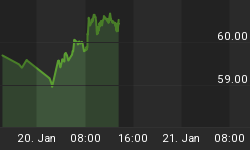US banks have managed a historic first: They’ve taken in so much cash this year that it’s breaking all precedents. In April, US banks took in $865 billion in cash deposits, and since January, they’ve taken in $2 trillion.
And, of course, the bulk of those massive cash gains went to the biggest institutions, with JPMorgan Chase, Bank of America and Citigroup leading the pack.
For the week ending June 10, US banks reported $15.47 trillion in deposits--up a whopping $2.2 trillion from what they had by the close of February, according to the FDIC.
Behind the massive deposit inflow is a killer pandemic.
With all the COVID-19 aid, from unemployment benefits and stimulus checks to the small business protection program, there’s been a lot of cash on hand to deposit into bank accounts.
Skewing the data a bit will be the PPP, the payroll protection program, which saw a lot of money deposited into accounts for small business (and some, not so small). That money will have to be spent soon, so deposits will likely show a drop-off in the coming months. In total, bank deposits were boosted from this $660 billion distributed via PPP.
“Any way you look at it, this growth has been absolutely extraordinary,” Brian Foran, of Autonomous Research, told CNBC. “Banks are flooded with cash; they’re like Scrooge McDuck swimming in money.”
Source: CNBC
And while the pandemic sparked a saving spree as a protection measure among Americans, with states now reopening, will spending take over again?
In April, the consumer savings rate hit 33%--another precedent--prompting Gregory Daco, chief U.S. economist at Oxford Economics, to opine for Pymnts.com: “There is a tremendous uncertainty and virus fear that is lingering and that is restraining people’s desire to go out and spend as they normally would.”
This week will be a determining one, when new data comes out on consumer spending, housing and factories. That’s where we will see the “lingering” damage of the pandemic more clearly.
Since reaching their peak in late March, US unemployment benefit applications have dropped on a weekly basis. If they show a similar drop for the week ending June 20th, the Wall Street Journal says this would “suggest more labor market progress, though layoffs is still historically elevated and a full recovery appears distant”.
One major current trend, however, may mean more steady deposits ahead for US banks.
Data is emerging that the wealthy aren’t spending, and that’s an economic disaster at a time when the economy is desperately trying to recover. It won’t recover without the money of the rich.
According to Harvard researchers, those at the bottom of the income pyramid are now spending pretty much like they were before the pandemic, but the rich are still holding out.
"When the stimulus checks went out, you see that spending by lower-income households went up a lot," NPR quoted Nathan Hendren, a Harvard economist and co-founder of the Opportunity Insights research team, saying. "For higher-income individuals, that spending is still way far off from where it was prior to COVID and it has not recovered as much," he added.
By Josh Owens for Safehaven.com
More Top Reads From Safehaven.com:
















